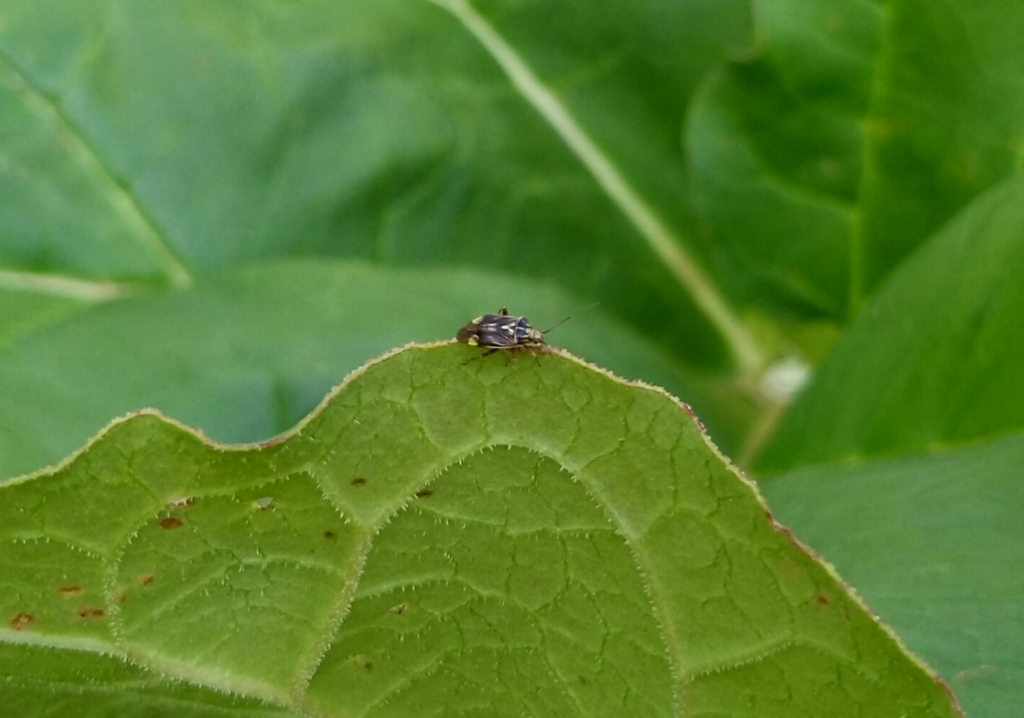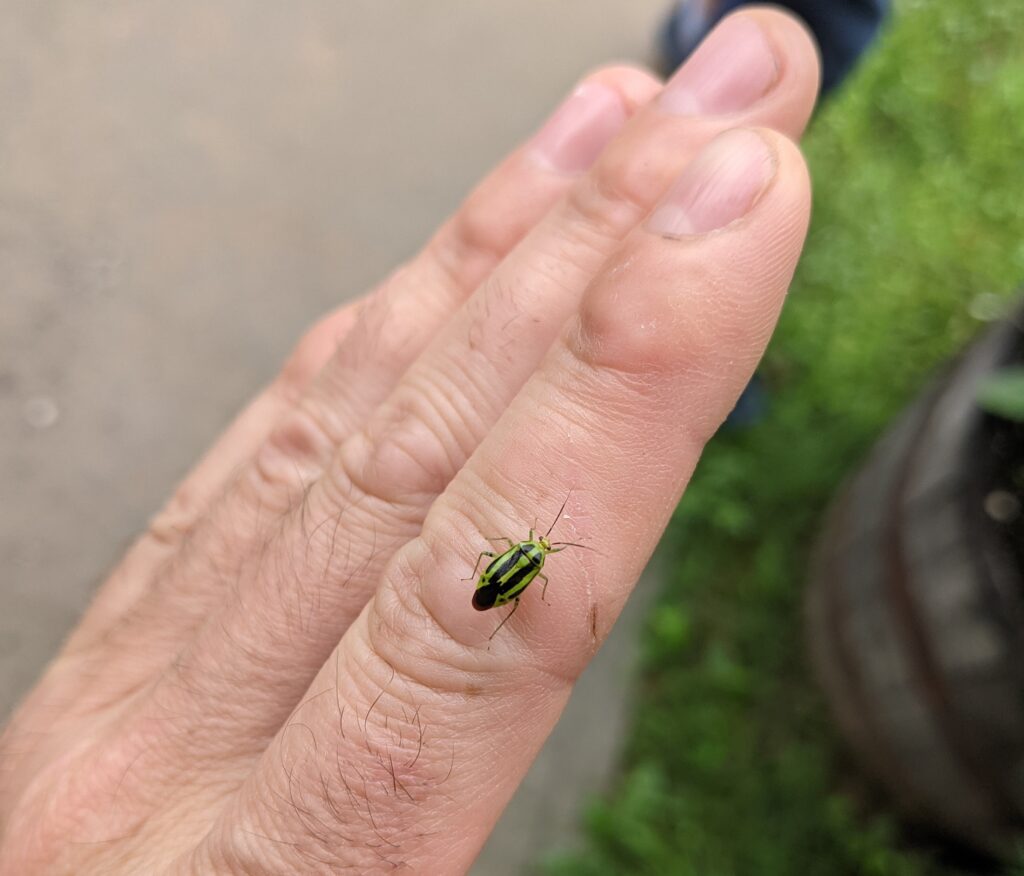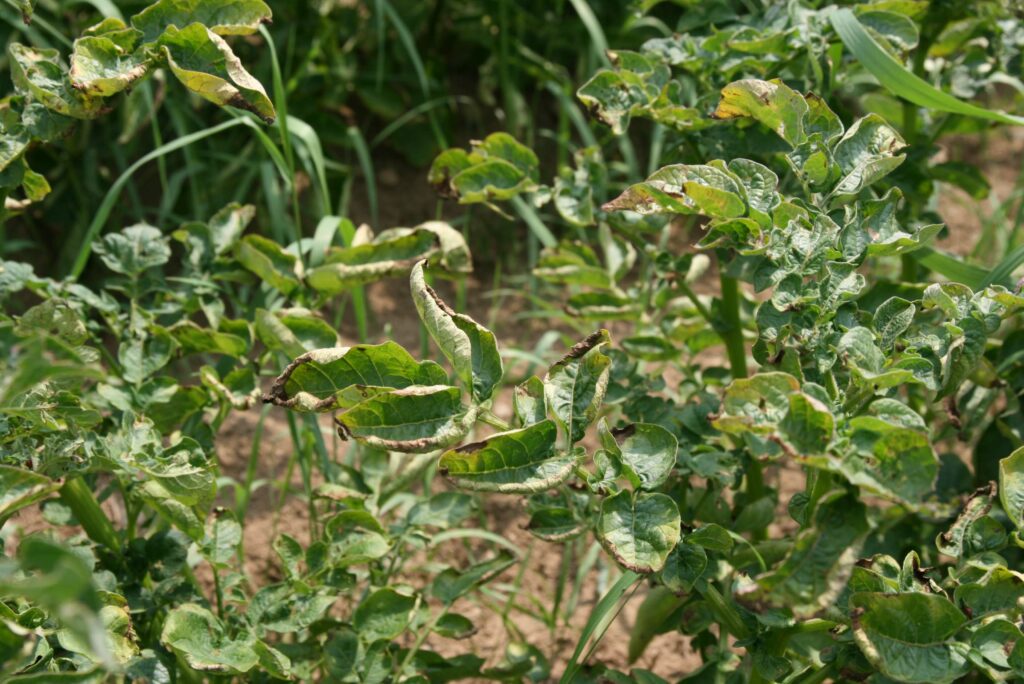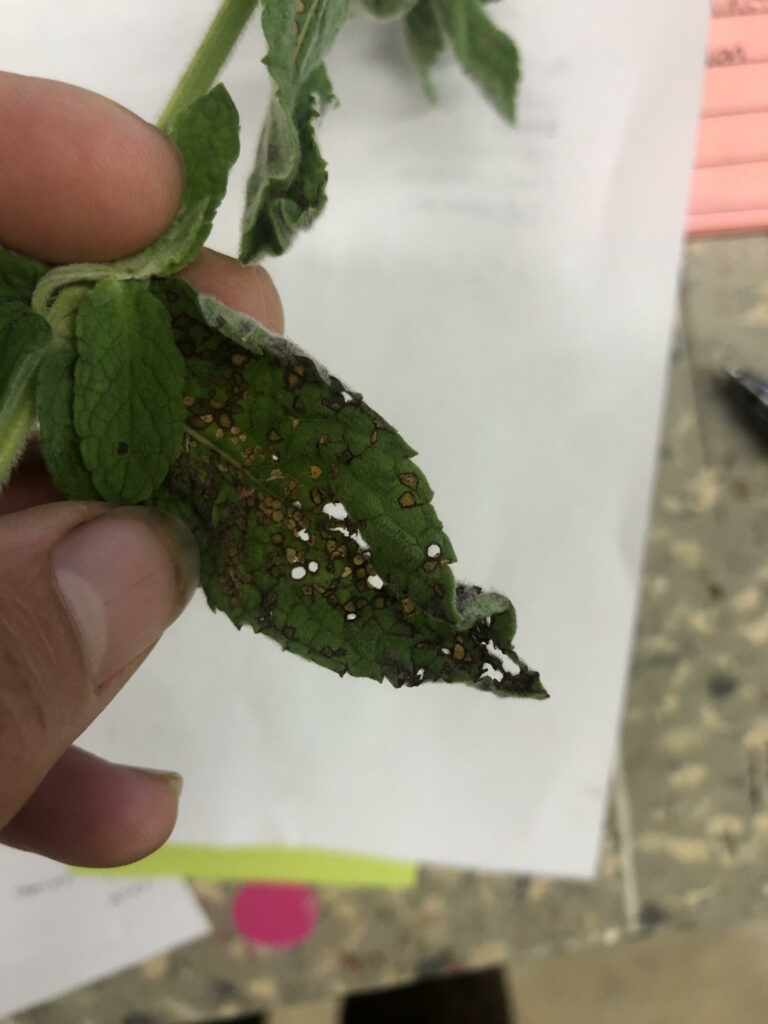
Pests: Tarnished Plant Bug (Lygus lineolaris) and Four-Lined Plant Bug (Poecilocapsus lineatus)
Pest identification and lifecycle, most common symptoms and crops affected:

The tarnished plant bug is a small (6 mm), bronze, brown and black bug that feeds on a very wide variety of plants (up to 300 different species). They overwinter as adults under debris and become active early in the spring. The population size explodes in fields of hay. When the hay is cut they fly in search of food and end up on fruit, vegetables and cut flowers. There are three or more generations per season.

They are serious pests on strawberries (causing cat-faced berries), lettuce (browning of midrib), celery (causing scars on the petiole), flowers (destroying buds), eggplant and pepper (destroying flower buds which drop off before fruit can form), broccoli (brown beads in the head), and much more. In potato they basically kill flowers (who cares?) and damage some of the leaflets (minor problem). But the browning leaflets sometimes concern folks that fear it may be late blight.

Four-lined plant bugs and their management are similar to tarnished plant bugs, though their adult form stands out and is more easily spotted, as they are yellow with four black stripes — somewhat similar in appearance to striped cucumber beetles. Four-lined plant bugs also feed on a very wide variety of plant species, and particularly like feeding on leaves from the mint family. Their feeding damage causes round sunken dead spots on a leaf, which may eventually become transparent, or even fall out of the leaf, leaving a round hole. Because they create many of these spots in the same area as they feed, it can often look alarmingly like a foliar disease.

Management options:
Pesticides approved for use in certified organic production (as a last resort):
Both bugs may be killed by pyrethrum (PyGanic being the most common product name), but in a heavy population pressure year it is often not worth it because their numbers are so great in all the fields of hay, and in the weeds surrounding you, that what you kill will be replaced in a day or two. Beyond using row cover to exclude them, weeding and nearby field management is about all you can do to keep the numbers low. If you choose to use pyrethrum, you may find best results if you follow it as soon as possible with row cover or exclusion netting to keep out the next batch headed your way.
Please note: This information is for educational purposes. Any reference to commercial products, trade or brand names is for information only, and no endorsement or approval is intended. Pesticide registration status, approval for use in organic production and other aspects of labeling may change after the date of this writing. It is always best practice to check on a pesticide’s registration status with your state’s board of pesticide control, and for certified organic commercial producers to update their certification specialist if they are planning to use a material that is not already listed on their organic system plan. The use of any pesticide material, even those approved for use in organic production, carries risk — be sure to read and follow all label instructions. The label is the law. Pesticides labeled for home garden use are often not allowed for use in commercial production unless stated as such on the label.
For more information on four-lined plant bugs, and good photos of both the bugs and their damage, look here.

